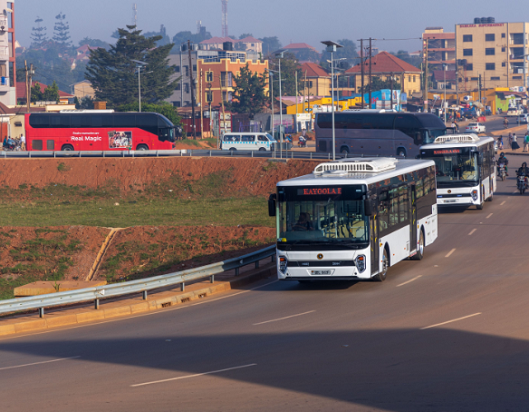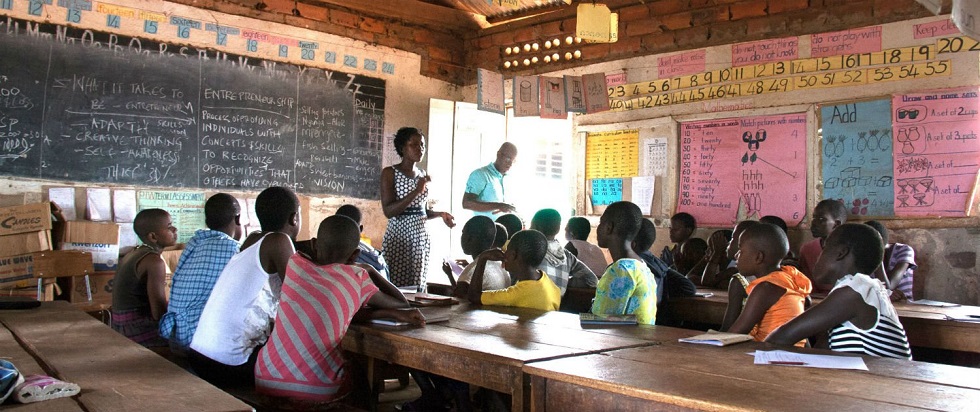The Ministry of Works and Transport is planning to establish an independent unit to implement the Bus Rapid Transport-BRT System in Kampala to fulfill conditions set by the project’s prospective funder, the World Bank.
In August, Ivan Mwondha, a senior transport specialist at the World Bank said the World Bank required government to establish a special authority or unit empowered through a statutory instrument to plan and implement the BRT system in Kampala and the metropolitan area.
The condition was not well received by government, the cabinet having passed a resolution in 2019 to reduce the number of agencies and authorities.
Now speaking to Uganda Radio Network, Eng. Rogers Kisambira who heads planning for the BRT system at the Ministry of Works says the Ministry is in the processing of forming a special unit to plan and implement the BRT system.
He says, the unit shall consist of Civil Engineers, Transport Engineers, Transport planners, Transport Economists, IT Specialists among other technical human resource. The team, it’s thought shall work semi autonomously to reduce on the bureaucracy in government institutions which could affect the effective implementation of the urban transport system.
Kisambira says the Ministry shall continue talks with the World Bank to persuade them accept the unit rather than an independent authority. He says, the Ministry prefers concessional loans from development partners like World Bank for their low interest rates and longer repayment period spanning up to 30 years compared to private lenders offering high interest loans with short payment period of 15 years.
The World Bank had committed to finance preparatory works for the BRT project to a tune of 10 million USD. In December 2021, the World Bank procured M/S Integrated Transport Planning, a consulting firm to carry out a strategic review of the BRT Project. The plans to fund the preparatory works however hit a snag demanding for an independent authority or a dedicated unit to handle the new system.
The Bus Rapid Transport- BRT system is part of the National Transport Master Plan of Uganda intended to run from 2009 to 2023. In 2010, the World Bank funded a feasibility study which informed the choice for nine corridors totaling to 88km on which the BRT would operate. The corridors would start from Kampala, to Bwaise and Kanyana stretching 10km, Kireka 9.4km, Zana 8km, Kawempe 9.2 km, Nateete 8.4km, Nabweru 8.4km, Kira 13.8km, Portbell 10.6km and 10.4km along Gaba road.
The study however identified three routes for a pilot; Kampala-Bwaise, Kampala-Kireka and Kampala-Zana. In 2014, the Ministry of works concluded designs for the implementation of the BRT on the pilot corridors with funding from World Bank. The designs included construction of the exclusive bus lanes measuring 3.5 to 5 meters located in the center of the road, traffic signalization at all key junctions, bus stations with side-aligned platforms and bicycle parking facilities among others.
The designs further provided that both lanes and stations would fit within the available space, low floor 18 meters long buses with capacity of 150 passengers. The designs also provided that bus operators use electronic ticketing systems to collect fare off board.
The cost of the pilot BRT was estimated at 490.4 million dollars; 389.4 million dollars for infrastructure development, 66 million dollars for buses (to be funded by the private sector) and preparatory activities which include land acquisition, sensitization, formalization of tax industry and others were costed at 35 million dollars. The project was supposed to be implemented by 2018, but delayed due to lack of funding.
Kisambira now says that as the Ministry moves to form a special unit for the BRT system in Kampala and the metropolitan, the initial designs shall be reviewed to address the current events. He says since 2018 a lot could have changed, from land ownership, developments on land where the project required extra land and required infrastructure among other factors.
He says the Works ministry, together with the Ministry of Finance, Planning and Economic Planning are working with development partners to fund a study to inform the design reviews. So far, he says, the French Development Bank has expressed willingness to fund the study which is expected to last only eight months.
But as the ministry plans for a rapid bus transport system, there are already operators running bus services within the city. The most prominent ones are Tondeka and Kalita which operate mainly in the central division and Nakawa, and northern bypass route respectively. Kisambira says these operators are aware of government plans for a BRT and hopes that when the infrastructure is put in place, they shall follow the guidelines set for operating buses in Kampala.
Eng. Joel Wasswa, the Transport and Traffic manager at Kampala Capital City Authority-KCCA says that the bus system is key in de-congesting the city through providing mass transport. He says that as the Ministry plans to implement a comprehensive BRT system, the services offered by bus companies in Kampala contribute to the ultimate goal of offering mass transport to de-congest the city. Eng. Wasswa reiterated the government call for taxi operators to interest themselves in the Bus Transport systems and offer mass transport.
Dr. Amin Kiggundu, a lecturer of Urban Physical Planning at Makerere University says that the city needs to explore ways of investing in high capacity transport systems because they not only take more people but are cheaper on a large scale. “In mass transport, operators pay less per passenger kilometer” says Dr. Kiggundu giving an example of a Boda Boda which ferries one passenger as having to invest more than a bus operators carrying over 60 people for the same distance in Kampala.
He however adds, being that Kampala is poorly planned and less developed, there is need to invest in stage buses. Dr. Kiggundu urged government to offer incentives to bus operators to enable them operate more effectively. He says that constructing roads like the Entebbe Expressway cannot solve the transport congestion in Kampala. To him, the mass transport system is the way to go for Kampala.
According to KCCA, an estimated three million people commute to Kampala for work on a daily basis while close to two million reside there.
-URN




